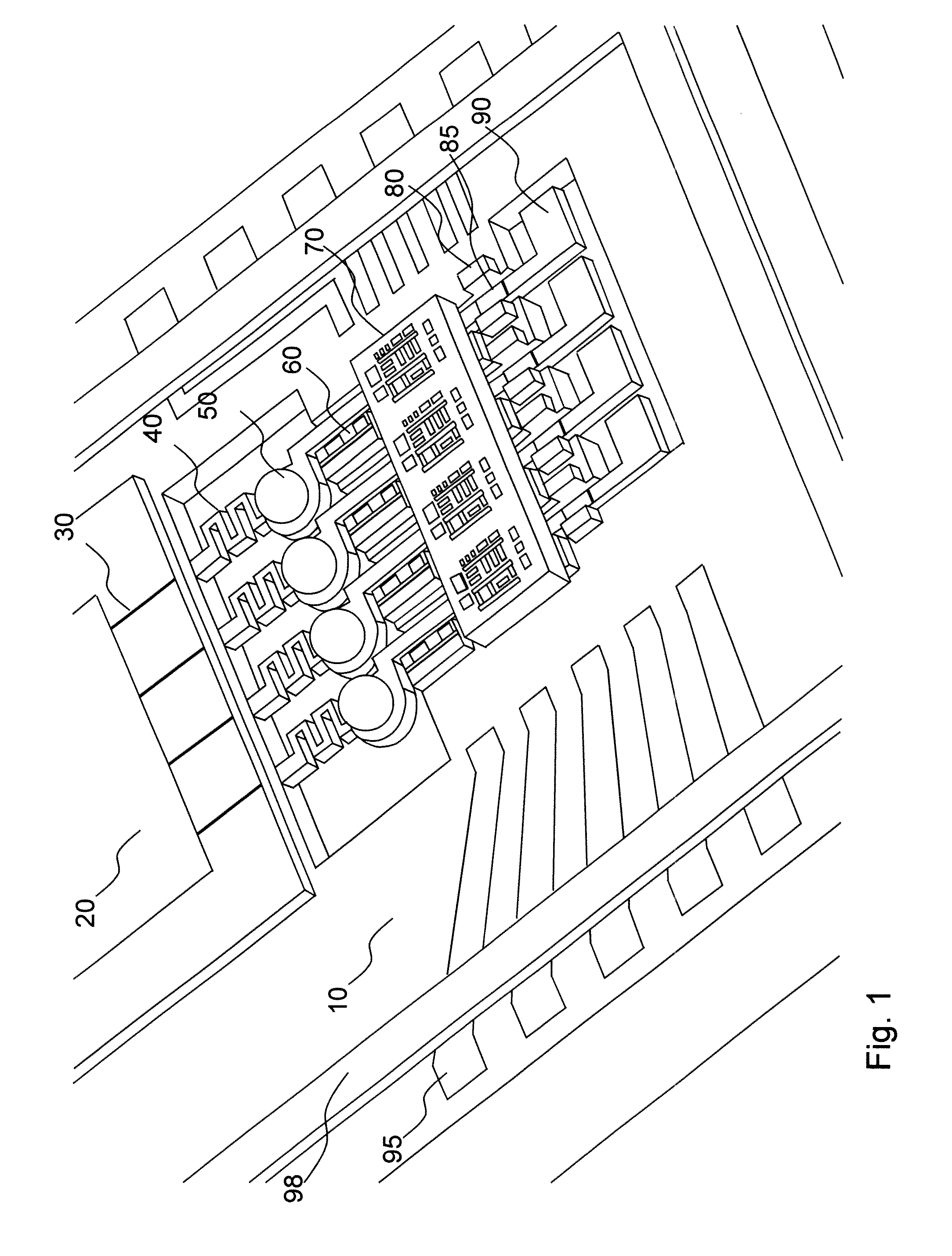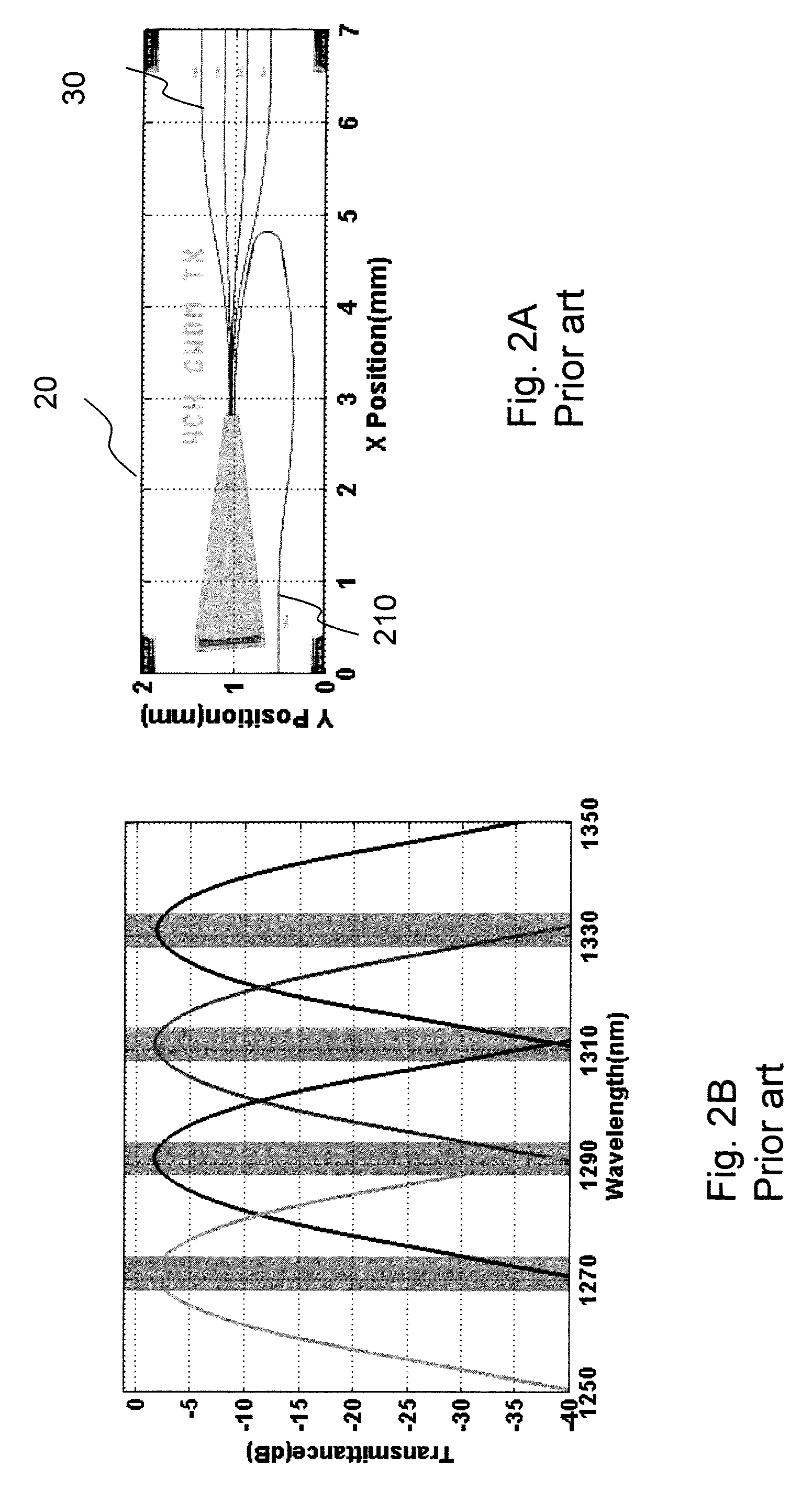Micromechanically aligned optical assembly
- Summary
- Abstract
- Description
- Claims
- Application Information
AI Technical Summary
Benefits of technology
Problems solved by technology
Method used
Image
Examples
Embodiment Construction
[0057]Aspects of the present invention uses adjustable elements that are integral to the submount to move the optics to optimize the coupling. Once the alignment is perfected or acceptable, the parts are permanently soldered into place using microheaters.
[0058]FIG. 1 shows a laser to PLC coupling part in accordance with aspects of the invention. The entire assembly is mounted on a silicon breadboard or platform 10 that has been suitably prepared for hybrid integration. A PLC multiplexer 20 that combines many wavelengths into one waveguide is mounted on the silicon breadboard. Such a device could be based on etched gratings fabricated in silicon-on-insulator (SOI), or could be based on an Arrayed Waveguide Grating (AWG) fabricated with silica on silicon technology. In either case, there would be a plurality of four as illustrated, input waveguides 30 at one side of the chip and a single waveguide on the other side for output.
[0059]There are also 4 lasers 60 soldered on to the silicon...
PUM
| Property | Measurement | Unit |
|---|---|---|
| Length | aaaaa | aaaaa |
| Power | aaaaa | aaaaa |
| Adhesivity | aaaaa | aaaaa |
Abstract
Description
Claims
Application Information
 Login to View More
Login to View More - R&D
- Intellectual Property
- Life Sciences
- Materials
- Tech Scout
- Unparalleled Data Quality
- Higher Quality Content
- 60% Fewer Hallucinations
Browse by: Latest US Patents, China's latest patents, Technical Efficacy Thesaurus, Application Domain, Technology Topic, Popular Technical Reports.
© 2025 PatSnap. All rights reserved.Legal|Privacy policy|Modern Slavery Act Transparency Statement|Sitemap|About US| Contact US: help@patsnap.com



